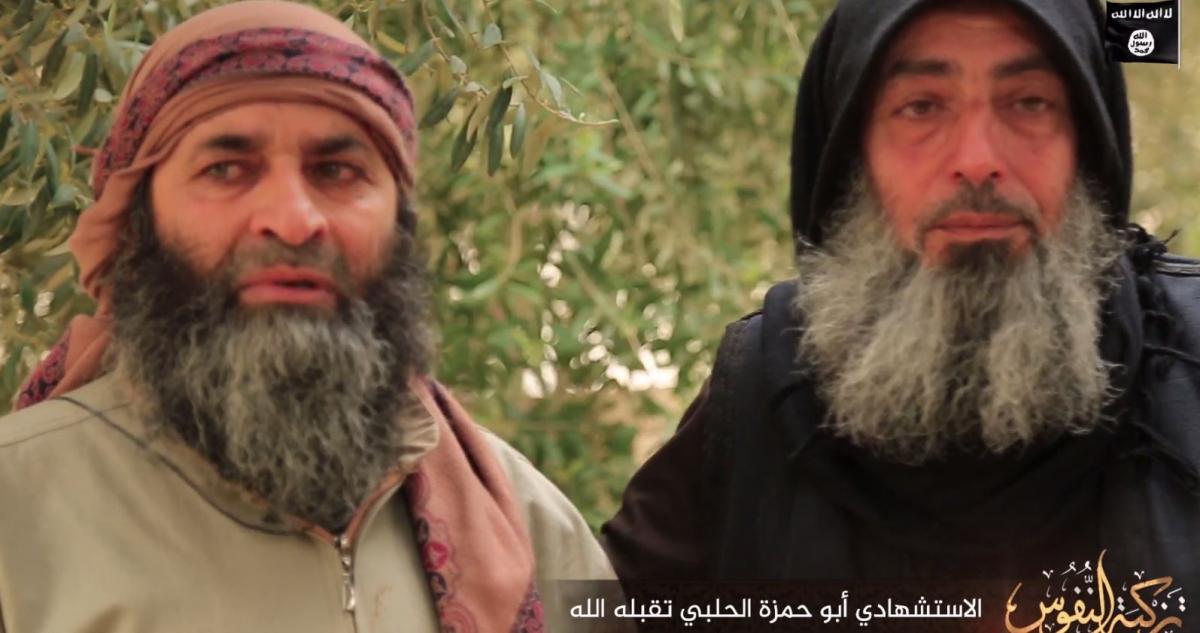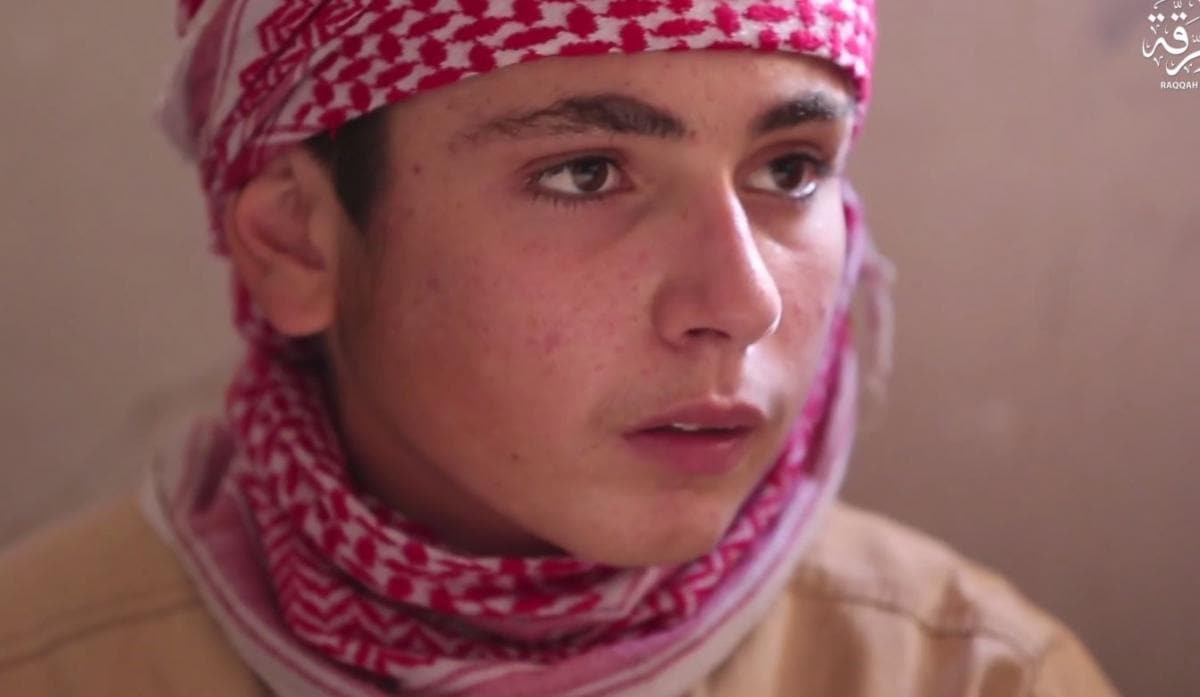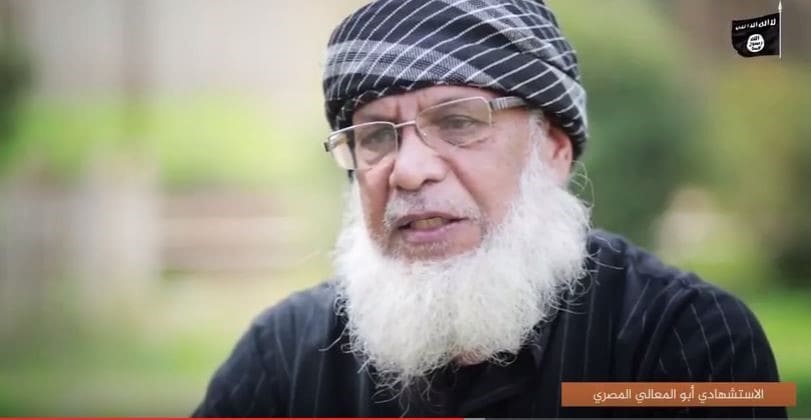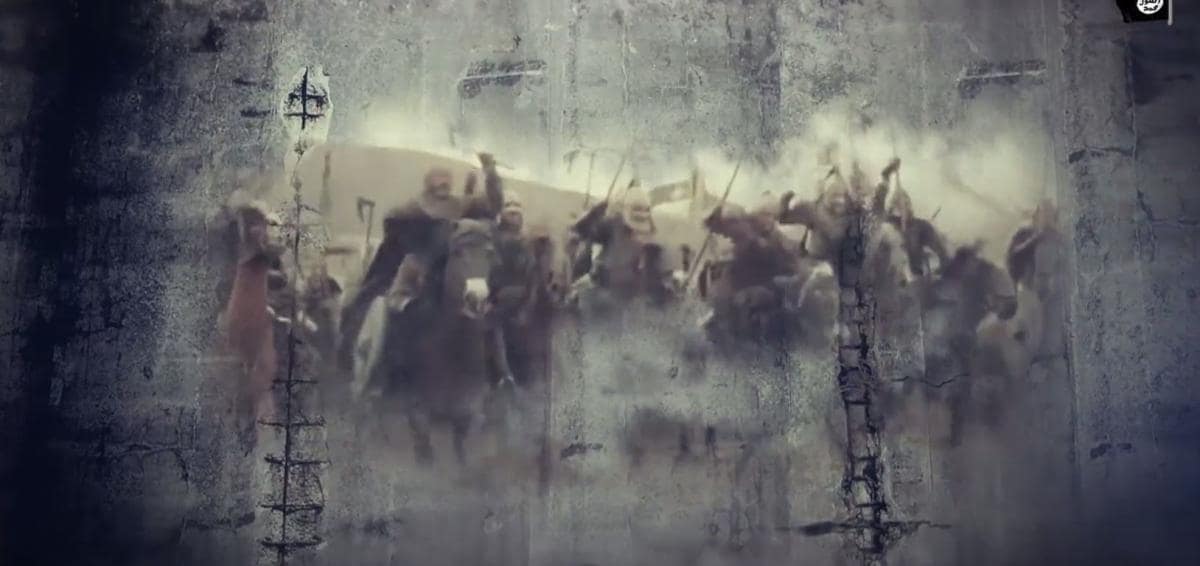by Alberto M. Fernandez
The ISIS footprint, once it is "gone" from Raqqa and Mosul, will remain massive and will continue to shape and influence for years to come.

On June 19, 2017, the Islamic State's Wilaya
(Province) of Raqqa, one of the two main cities of the ISIS
"caliphate," released a 36-minute-long Arabic language video, "The
Purification of Souls." The video included many of the elements we have
seen repeatedly in ISIS propaganda: images of battle, dead enemy
corpses, and calls for attacks in the West, in "the lands of
infidelity."
But coming as Kurdish led-Syrian
Democratic Forces (SDF) units inexorably bear down on Raqqa, the video
also has a remarkable, extended elegiac tone unusual for ISIS
propaganda. It is a Ramadan video and so a focus on the eternal and the
divine is not out of place, but one has rarely seen so much weeping and
emotion in an ISIS video, that is weeping and emotion on the part of
ISIS fighters, not of their many victims.
Almost six minutes pass in the video
focusing first on death and loss, and then on the sweetness and
transitory nature of life: a grave is filled in with dirt; a young man
gazes up at the heavens in the midst of Raqqa's rubble; an old man pulls
a battered bicycle out of the ruins of a house; gold coins are counted
and spin into eternity; a blacksmith labors wearily at his task; another
man treads a path through fallen, sere leaves; a father gazes at his
newborn baby; you see images of innocent children, of smiles and of
flowers, of gold and of trees. You see normal streets and then those
same streets that have been reduced to rubble.
This is Raqqa and it is in a way about the
ongoing Coalition air campaign against ISIS. But the commentary is
about much more than that. The commentator notes that those who have
chosen the path of Jihad in the Path of God have made a better choice
than the things of this world, of al-Dunya. You then hear the
voice of a dead man, of Abu Musab Al-Zarqawi, just as you see an ISIS
fighter on a sand berm shot and falling slowly to his death. Al-Zarqawi
notes that there is in life, in the end, nothing for the Muslim but
jihad and worship of their Lord. Focus, instead of this passing world,
on the eternal, on al-Akhira, rather than this life.
The video then shifts to the obligatory
battle scenes, of minor skirmishes in the olive groves and unfinished
cinder block houses of Raqqa's outskirts portrayed as if they were the
invasion of Normandy. The message here is not just about Raqqa but a
much broader point, that patience and steadfastness will, sooner or
later, lead to ultimate victory.

The scene shifts again now from the
battlefield to the testimonies of individual ISIS fighters and suicide
bombers. Several are young boys and old men. It is clear, as has been
the case in other ISIS videos for quite a while, that the organization
is seeking to maximize manpower by using the young, the elderly, and
even the handicapped or war wounded as it tries to stave off defeat and
compensate for its battlefield losses. The tone here is intimate,
personal, and emotional, as individuals relate, often with tears, their
struggle over doing the right thing in fulfillment of the tenets of
their faith and overcoming the distractions and resistance of everyday
life. Anyone who sees such testimony would be hard-pressed to say that
these are losers or nihilists, or that the motivation for many ISIS
fighters is anything but spiritual, emotional, and deeply-held. This is,
of course, a propaganda video which presents a skewed and fabricated
image of the reality of ISIS. But certainly the motivating force here is
lovingly and carefully portrayed as belief and idealism.[i]
One young boy relates how he registered to fight and was sent away to
come back the next day. He remained convinced of what he wanted to do
and told his mother, who was filled with joy.
An older man relates how most of his boys
are mujahids and some are martyrs. He says he wishes had 20 sons to
contribute to the fight, but has become convinced of himself taking up
arms. Another older man tearfully says to remember that you are a guest
and a stranger on this earth, and that Allah, for Whom we long, may
accept us as martyrs. A smiling young man follows him, reminding viewers
that the gates of heaven are open for the martyrs.

And just to make clear what the goal is on
this earth for all this sacrifice and martyrdom, still another speaker
spells it out. All these explosions and all these suicide operations,
these Zarqawiyat, are to utterly extinguish unbelief (Kufr) from the earth so that in the end the worship of Allah alone will exist on the earth.
There is both apparent strength and
debility here. One can look at this video and – rightly – see the
weakness of an organization scraping the bottom of the barrel, taking
boys, old men, office workers, doctors and dentists, and the disabled
into its ranks as cannon fodder. But one can also see the inherent power
to move men's minds to action that has mobilized thousands outside the
borders of the Islamic State and that continues to inspire acts of
mayhem even as the military fortunes of the Islamic State decline.

The irony is that three things are
happening now simultaneously in this space for ISIS: (1) the imperative
to do more worldwide, more and greater acts of mayhem, is paramount; (2)
the ability for ISIS to carry out complex operations is increasingly
hindered by its physical decline, as safe havens and established
patterns are disrupted; (3) the ideological framework of ISIS, with all
its political-religious power, remains, more or less, intact and potent
in the same way as the dead Anwar Al-Awlaki and dead Al-Zarqawi still
inspire.
And while wars are fought on the
battlefield, they are also fought in the mind and in the media. MEMRI
recently documented, as it does almost daily, people openly
demonstrating their allegiance to the Islamic State on social media.[ii]
Some recent ones came from El Salvador and Tokyo, from a Nigerian
prison, and from comfortable venues in Poland and Australia. One recent
ISIS video from Mosul featured an elderly Egyptian who had previously
lived in the U.S. States volunteering for a suicide mission. His last
words to the infidels before he drove off to kill them in his SVBIED was
a paraphrase of a Hadeeth of Muhammad repeated three times for
emphasis: "We are coming to slaughter you."[iii]

As the Islamic State declines in its
Syrian-Iraqi heartland, it will still leave behind a massive material
culture. On June 11, 2017, the pro-ISIS Al-Yaqeen Media outlet issued an
infographic documenting 41,230 media items produced by ISIS in the past
three years. Of those, 2,880 are videos. This does not even include
non-official material produced by ISIS supporters, or indoctrination by
rival jihadi groups. The ISIS footprint, once it is "gone" from Raqqa
and Mosul, will remain massive and will continue to shape and influence
for years to come.
The great American conservative Catholic
thinker Russell Kirk once wrote: "All great systems, ethical or
political, attain their ascendency over the minds of men by virtue of
their appeal to the imagination; and when they cease to touch the cords
of wonder and mystery and hope, their power is lost, and men look
elsewhere for some set of principles by which they may be guided. We
live by myth. 'Myth' is not falsehood; on the contrary, the great and
ancient myths are profoundly true."[iv]
Obviously, ISIS is not by itself a "great
ethical or political system," but it certainly appropriates from one,
from Islamic history and practice, and then selectively chooses various
elements for maximum effect, which provides the depth and "appeal to the
imagination" that the violence, the surface glitz and the superficial
appeals to action by shallow youth alone cannot satisfy. It is all too
easy to look at Salafi-jihadism and see only the slaughter and the
intolerance. But there is more than that.
So the ISIS brand has, in a way, conquered
as it has matured. Today, it is not, as far as we can tell, the latest
video or act that radicalizes, but a much broader image which is itself
made up of the sum of real actions and pronouncements, and tens of
thousands of videos, photos, articles and commentary (including those
against ISIS). ISIS is itself part of a much larger – and often bitterly
contending and contradictory – brand of Islamist and jihadi action and
thought, which has real power because it is rooted in the numinous and
because it is also tethered in the language and aura of political
revolution.

The unmooring of society happening most
dramatically in the Sunni Arab Muslim world which has led to the rise of
ISIS is also happening, to a lesser but real extent, in non-Muslim
societies, in the West and perhaps in other places, as young people –
even in affluent, democratic states – feel alienated from all sort of
societal processes, from the political to the spiritual and economic,
making them ripe for all sort of simplistic, powerful political
pathologies.
In this reading of history, ISIS is not
the past but the future. An organization that can couple an arresting
political-religious narrative to a plausible reality on the ground may
well find shallow, bored, disenchanted youth who are looking for
something new and exciting in a perception of certainty coupled with
redemptive violence. In such a depiction of the political and spiritual
moment, the challenge is not just Salafi-jihadi interpretations of
Islam but any sort of convincing, well-articulated "new dogma" which can
captivate youth to violence, this could be of the extreme left or far
right or some sort of religious or ethnic based nationalist proposition,
or a new iteration of the Al-Qa'idism we have seen in the past.[v]
One leader of the evanescent
anti-capitalist Occupy Wall Street movement in the U.S. has spoken of
the future as a place where "authenticity goes hand in hand with
edginess," and that in this future that he sees being born, "the
majority does not follow its center, it undulates towards its
inspirational edges."[vi]
While OWS didn't amount to much in the end, for many young people, ISIS
and similar groups do live and breathe "on the edges" and that is where
they get their power, in the "edginess" and rigidity found on the blade
of a knife.
In a world where polite society and the
cultural elite increasingly highlight the hedonistic cult of the
individual or the vague feel-good brotherhood of hegemonistic globalism
as the only two insipid choices available, many will seek something
else, a cause that is about real sacrifice for something important. This
will usually not lead to terrorism or even violence and is, in fact, a
noble condition, to believe in something sincerely and fight for it.
As horrific and baleful a reality as the
Islamic State is, the larger human impetus for sacrifice and
faithfulness, expressed by dying or even killing for something important
or transcendent, remains and is deeply rooted in the human psyche and
imprinted on our spirits. We blind ourselves if we think this is a
challenge only to be solved in the battlefields of Raqqa, or in the
meeting rooms of Davos or Silicon Valley or Turtle Bay, for that matter.
*Alberto M. Fernandez is Vice-President of MEMRI.
[i] https://www.memri.org/reports/they-are-neither-losers-nihilists-worshipers-death-nor-sick-cowards%E2%80%93-rather-believers-and
[ii] https://www.memri.org/jttm
[iii] https://www.memri.org/jttm/egyptian-isis-fighter-featured-video-says-he-left-us-caliphate
[iv] http://www.theimaginativeconservative.org/2013/06/we-live-by-myth.html
[v] https://www.cfr.org/blog-post/rise-ethnonationalism-and-future-liberal-democracy
[vi] http://www.globatron.org/hashtag/author/micahwhite
Alberto M. Fernandez is Vice-President of MEMRI.
Source: https://www.memri.org/reports/islamic-states-raqqa-elegy-shows-both-weakness-and-power
Follow Middle East and Terrorism on Twitter
Copyright - Original materials copyright (c) by the authors.
No comments:
Post a Comment